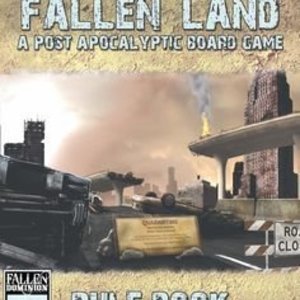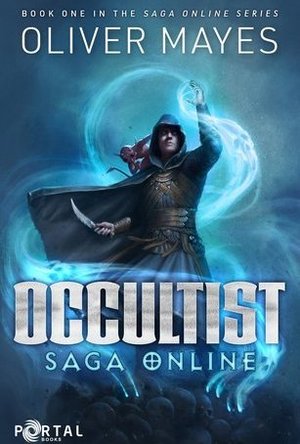
Stock Intrinsic Value
Finance and Utilities
App
It is generally through a stock price-earnings ratio to determine whether it is worth the purchase...

AFL LIVE 2
Games and Sports
App
Lead your team to Premiership glory in the most realistic AFL experience on iPhone and iPad. Play...
Purple Phoenix Games (2266 KP) rated Sushi Go! in Tabletop Games
Aug 4, 2020
You and your friends enter the local sushi restaurant, ready for a relaxed meal. As the dishes pass by, you begin to realize that your friends are all vying for the same tasty selections that you are! You must be quick to snatch them up before they do, and end up with the yummiest sushi combination in the restaurant!
DISCLAIMER: There are expansions to this game, but we are not reviewing them at this time. Should we review them in the future we will either update this review or post a link to the new material here. -T
Sushi Go! is a game of card drafting, hand management, and set collection in which you are trying to collect combinations of different sushi dishes for the most points at the end of 3 rounds. Each round is played as follows: look at your hand of cards, select one to keep, pass the remaining cards to your neighbor, repeat process until all cards have been claimed. Points are added at the end of the round, cards are collected and shuffled, and then the next round begins. Simple, right? Mechanically, yes. But strategically, no! You’ve got to make decisions with each hand to decide which types of sushi you want to focus on in a given round. Keep an eye on your opponents selections as well, because you miiiiight just be able to keep them from getting a complete set and scoring tons of points!
I can’t remember if I’ve said this in any of my previous reviews, but I LOVE games of card drafting and set collection. They are MY JAM. So I love Sushi Go! The gameplay is similar to 7 Wonders (maybe that’s why Bryan rated it the lowest in the group…), and it requires way more strategy than you might think. Throughout the rounds, you know what cards your opponents have kept, so you can actually see what points they have the potential to earn. That might influence which card you choose to keep – even if it scores you no points, it could hinder your opponent from scoring those points as well! You’re not only trying to collect complete sets of certain cards, you’re trying to make sure your opponents aren’t monopolizing high-scoring cards.
Another thing I love about Sushi Go! is that it is a fast game. It can be pretty strategic, but the game plays so fast that it doesn’t feel too heavy. I usually play it as a short filler between some bigger games. The neat thing is that it still keeps my mind moving and keeps me engaged throughout the game – it doesn’t just feel like a throwaway game between meatier games.
The game itself consists of a hefty deck of cards, housed in a cute tin. The card quality is good, and they feel sturdy in hand. The artwork is perhaps one of the best parts of Sushi Go! The cards are bright and colorful, and the adorable faces on every piece of food are delightful to look at. Dare I even say, cute enough to eat?
I think that Sushi Go! is a great game to use to introduce new gamers to the hobby. It’s simple to learn, fast to play, strategic enough to be engaging, and not complicated enough to be daunting to new players. I might not always think to play Sushi Go!, but if someone suggests it, I will never say no! Purple Phoenix Games gives it a tasty 19 / 24.

Golfshot: Golf GPS + Scorecard
Sports and Health & Fitness
App
Gain confidence on over 40,000 courses worldwide and trust in your game with Golfshot. Like a...

Virtual Families 2: Our Dream House
Games and Entertainment
App
*Now Downloaded 11 Million Times!! Well played, people!* *Whoa! You made us #1 in Simulation!...

Sniper Fury Target
Games
App
5/5 “Best graphics and as good as Call of Duty.” 5/5 “Fabulous game with breathtakingly...

Fallen Land: A Post Apocalyptic Board Game
Tabletop Game
Set in a post-apocalyptic sci-fi setting, Fallen Land: A Post Apocalyptic Board Game is a hybrid...
Dean Connelly (17 KP) rated F1 2017 Day One Edition in Video Games
Jan 10, 2018
If youre bored with a season theres more to it there's the traditional multiplayer, events, time trials New for this year, there is a championship mode. Using cars using older and newer cars and invitational events. Ranging from overtake challenge (overtake cars in say 3 minutes) to pursuit (AI in slower cars but you have to pass them) to time attack (cover say 3 laps in 5 minutes.) There's also multiple championships (ranging from a championship in classic cars to a double header tour to an international street series. Agent wise, you still get the option of changing teams every year and half way through a season. She’s presented a lot more in this year.
Bad news, well if you’re thinking of driving a McLaren, be afraid to be disappointed. I’ve heard more complaints about McLaren being as bad in the game then they are in real life, dare I say worse. The Ai still decide to take you off but it’s not as bad as 2016s AI. Your engineer is not as useless as last year but he still needs work on, agent is stil the same as last year so could have her doing more. Marshall’s still are biased and can’t tell the difference
It’s definitely an upgrade on last season but AI still isn’t perfect and there is so much more that could’ve been done. But as far as a game goes, this is more Mercedes then McLaren.
Ross (3284 KP) rated The Occultist in Books
Feb 12, 2019 (Updated Feb 14, 2019)
The LitRPG genre (the best-known example being Ready Player One) is something of a narrow one. There are only a few levers to pull: the main character's real life scenario, the game mechanics, the main character's chosen "class" in-game and the conflicts therein.
The Occultist looks to mix this up a bit with the main character choosing a less traditional class, of occultist - that is, he learns the ability to summon a variety of demons and spells/abilities to use with them. This would mark The Occultist out from the crowd, if it weren't for Awaken Online already having done almost the exact same. In AO, Jason chooses a dark class and summons zombies, skeletons etc, and a large part of the early stages of this book really bear a very close resemblance to AO. We have the main character's problems at home, leading him to want to escape into the game, and to find a way to make money from his gaming hobby. The chosen in-game path is almost identical. There is an extremely strong, popular player that he wants to compete with.
From early on, I was thinking this book was a rip-off of AO. But the second half of the book is really where the book marks itself apart from AO. Whereas that book's action was focused on large scale strategy in battles, here we are scurrying around in the background picking players off one by one and there are some truly excellent action sequences, where the abilities and spells learned and the demons at Damien's disposal are used to some really creative effects. Damien looks to get some revenge on his nemesis and also to try and "level up" quickly (again, a key component of LitRPG books), and tries to pick off players as they battle other players, or take on perilous dungeons.
A lot of LitRPG books have had a very immersive gaming element, at times it was more like reading a more traditional fantasy book but where the main character was more clear what he was doing and what skills/abilities he was using. Here you are always aware the character is in a game: he "equips" clothes rather than getting dressed, there is no need for eating or sleeping, what can and can't be done, what you get from killing another character etc is so much more in line with games than in other books. This again marked it out from other books, and gave it a very different feel.
Another major selling point of The Occultist is that it doesn't mess around with time dilation (game time running at a much faster rate than real time). I don't see why so many of the other books in this genre feel the need to build this in, as it is then hard to keep it consistent, and doesn't really feel right or necessary at any time.
Also, Damien's real world troubles take more focus than in other books, as he struggles to find somewhere to live and is on the run.
While the book manages to stick to its own rules (what can and can't be done etc), there is one moment where the main character manages to do something he shouldn't be able to do (his spells have a cool down period before they can be used again and at least once this isn't observed), which was slightly frustrating given how hard the author had tried to plan out the action in line with the people involved and their skills and strengths.
My only real gripe with the book is the title of the game/series - Saga Online, which sounds less like an exciting new MMORPG, and more like the web portal for booking a pensioners' cruise!
In summary, not an original idea (but hard to have such a thing in this genre) but a superbly well told, exciting and fun read. I heartily recommend this to anyone who likes fantasy books, games like the Witcher or just anyone looking for some real fun escapism.
Ryan Hill (152 KP) rated Aquaman (2018) in Movies
Jun 8, 2019
Instead Wan and the writers behind Aquaman intelligently focus on world-building and following the tried-and-true "heroic journey"; complete with initial rejection of a prophesied role, slow but steady immersion into said role's culture, recognition of the need for growth and change, and eventual assumption of role. It's been seen before and it'll be seen again. But what propels Aquaman ahead of other films like it is the energy that Wan imbues it with. It's goofy without undermining the sincerity of Arthur's journey. It's fast-paced and simple-minded without sacrificing the weight and universality of this particular hero's myth. It's loud and colorful and *full* of CGI everything without reducing itself to an over-commercialized, artless heap of nothingness.
It's a big-ass blockbuster with personality. Momoa has charisma to spare; he owns the physicality and irreverence of this new imagining of the king of the ocean perfectly. Amber Heard is sexy and badass as Mera; something of a victim of a forced romance but also a compelling and strong protagonist in her own right. Patrick Wilson as Oceanmaster (call me....Oceanmaster) is given enough screen-time to develop that he's more than a punching bag for Aquaman; but actually a character with ambitions and a defined, fleshed-out purpose. The origin segment is tightly done and more than enough to set the stage for what is to come. And probably the strongest aspect of this picture, the costuming and world-building, is off the charts. Similar to the enduring fantasy films that precede this (LOTR, Star Wars, Avatar for a few examples) the undersea kingdoms are a place I want to return to. They aren't just my world dressed up with CGI and the occasional costuming flourish; they're entirely foreign and endlessly inventive. Probably a solid third of the film is simply Aquaman, and the audience, being told about this world and shown it by Mera. While that may not be artistically prestigious strategy for engaging audiences, it entertains and fascinates on a "turn off your brain and look at those pretty colors" sort of way. There's a simple glee in seeing sharks ridden like horses or an octopus pounding a war-time set of drums.
I always offer the disclaimer when writing about nerdy films that I love which is this: I am a nerd. While I wasn't particularly attached to Aquaman growing up; his journey, the nature of this sort of film and the cinematic universe he will be growing into are fundamentally important to me, and I like to embrace that bias rather than keep it in check with reduced ratings or "objective" analysis. Whether it be a giant, confusing and chaotic battle between underwater armies or the horrifying descent into "the trench"; you'll always find me looking up at the screen like a little kid. Or moments like Arthur meeting Mera and confronting is past, or taking upon the role of king while wielding the trident; I just love that sort of stuff. I'm a sucker for these beats and this formula; and all signs point to this continuing. So while I may like it more than most; I'd mostly like to say Aquaman still distinguishes itself as a particularly goofy, sprawling, mythic, and metal experience that deserved to be seen on the big-screen, and to be celebrated as the fantasy film it is. It's a great time, and a nice addition to the DC film franchise.



